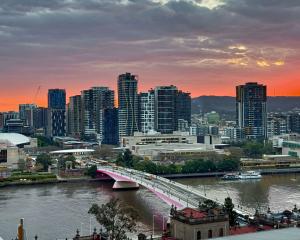
In 1850, an Atlantic storm pounding the Orkneys gouged away grass and sand on the west coast of Mainland Island.
The next day, a passing crofter found himself gazing at stone walls, tunnels and the remains of hearths.
The storm had uncovered Skara Brae, northern Europe's best-preserved prehistoric village, home to farmers and fishermen before the Egyptian Pyramids or Stonehenge rose into the sky.
We came to Skara Brae and the Orkneys via a ferry from John O'Groats, where the souvenir shop sold copies of Hairy Maclary from Donaldson's Dairy.
The 5000-year-old village is the most famous of nearly 20 major prehistoric sites on the Orkneys.
Its eight hobbit-like underground stone houses cover an area the size of a suburban section.
They are connected by subterranean passages, so people could move between them without facing the sub-arctic blasts of Orkney weather.
The Celts who lived here in the third millennium BC were clearly dogged and resourceful.
They bred sheep and cows, grew cereals, and hunted seals and red deer.
They made pottery, and worked with stone and bone.
They built these houses inside big midden heaps of bone, seaweed and animal dung that insulated them against the freezing winds.
The walls were shaped sandstone slabs.
Whale bones found on the floors may have been rafters supporting turf roofs.
Seven of the houses are built along almost identical lines.
Immediately opposite the entrance there's a "dresser" of stone shelves on which household gods or prized objects were probably displayed.
Against one wall are beds shaped like stone trays, with recesses - for lamps? - above them.
In the middle of the floor is a hearth, and near it, several houses have a "limpet box", a small tank of stone slabs sealed with clay.
Seafood was probably kept fresh here before cooking.
The eighth house is a puzzle. Longer and thinner than the others, it lacks beds or dresser.
Scattered across its floor were fragments of bone and antler.
A workshop? A place for penning animals and/or initiation ceremonies?
Nobody knows. Neither do they know why the 50-odd inhabitants of Skara Brae abandoned their village so suddenly 5000 years ago.
There's no sign of fire, no weapon marks or indications of violence.
One of those ferocious Atlantic storms may have begun smashing at the walls, making the inhabitants flee.
But why didn't they return?
Looking down into the cosy, compact, eerily silent little chambers as you walk the paths around them, you feel like a voyeur.
Everything is ready for owners who never came back.
We went back to the mainland the next day.
As our ferry plugged through chill green seas, a head broke the surface, stared, snorted, sank from sight.
A seal of approval on our visit to Skara Brae. - David Hill











